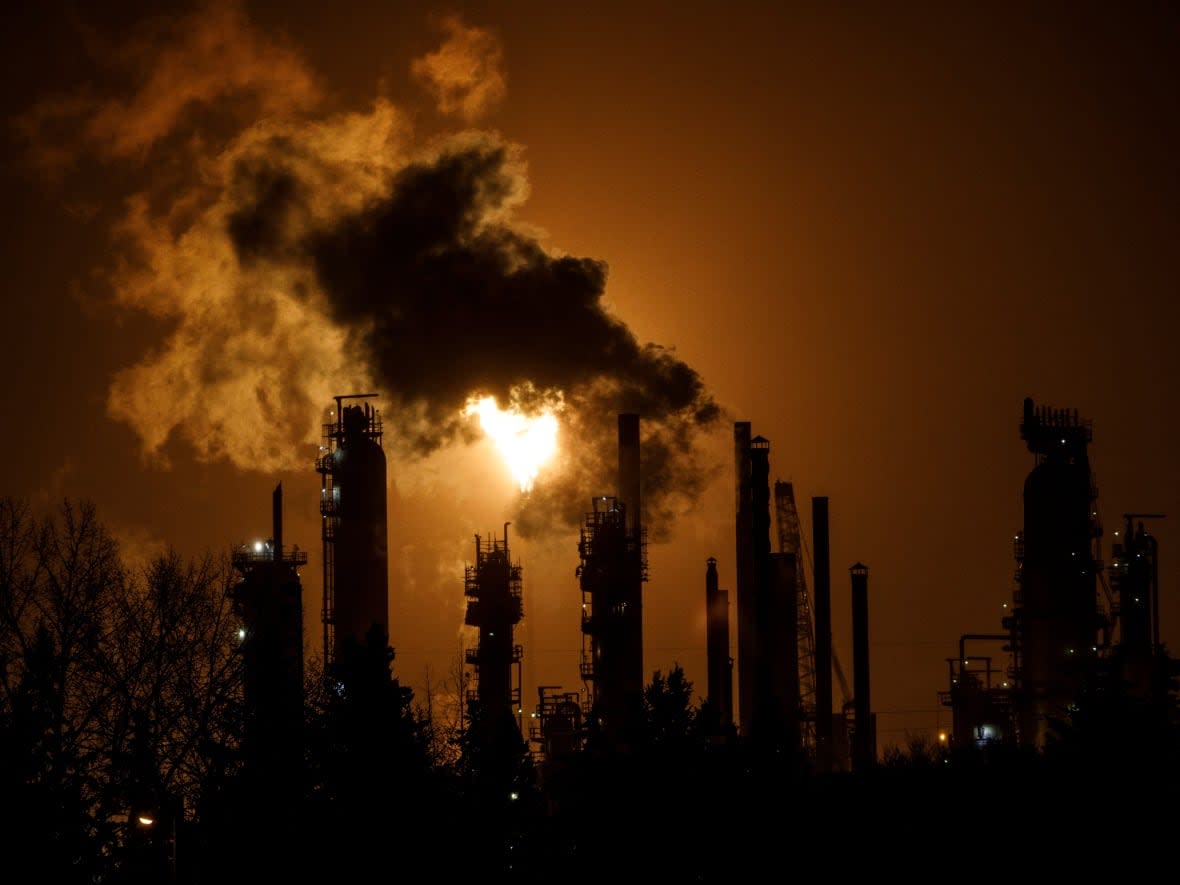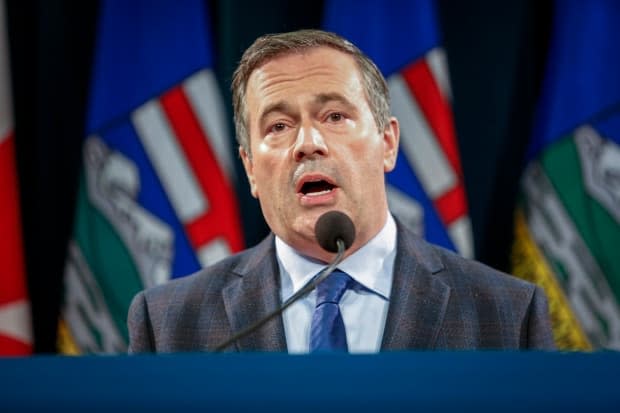Alberta invests $131 million in carbon capture projects in bid to cut emissions

Alberta is investing $131 million in projects designed to help prevent carbon emissions from entering the atmosphere.
Up to $131 million from Alberta's Technology Innovation and Emissions Reduction (TIER) fund is being funnelled into Alberta's Industrial Energy Efficiency and Carbon Capture Utilization and Storage program, Premier Jason Kenney announced Thursday.
Seven projects have been selected to receive a total $100 million in program funding, Kenney told a news conference. Another $31 million will go to other carbon capture utilization and storage projects by the end of this year.
The projects include:
Advantage Energy: Glacier Gas Plant Carbon Capture and Storage and Waste Heat Recovery in Hythe
Ember Resources: Ember Engine Emissions Reduction Program at multiple facilities throughout east/central Alberta
Imperial Oil: Kearl ConDex Full Scale Oil Sands Mine Installations in Fort McMurray
NuVista Energy: Wembley Cogeneration and Waste Heat Recovery Project in Wembley
Strathcona Resources: Lindbergh T70 Cogeneration Expansion in Elk Point
TC Energy: Turney Valley Generating Station in Turner Valley
Tidewater Midstream: BRC Integrated Steam Methane Reforming (SMR)-CCS-Cogeneration Project in Cynthia
TIER is Alberta's industrial greenhouse gas emissions pricing and emissions trading system. It's funded by large industrial facilities, which account for more than 60 per cent of Alberta's total emissions.
Carbon capture utilization and storage (CCUS) and carbon capture and storage (CCS) capture emissions, permanently storing carbon dioxide underground or using it in other industrial processes.
'Home-grown Alberta ingenuity'
Kenney, a strong proponent of the technology as a way of reducing emissions from Alberta's fossil-fuels energy sector, said the latest investment will set the groundwork for "a lower emissions future" for the province.
"The seven successful projects we have selected so far are game-changers for cutting emissions in Alberta," he said. "They are incredible initiatives based on home-grown Alberta ingenuity and leading edge technology."
CCUS can capture, use and store up to 90 per cent of carbon dioxide emissions produced by industrial facilities.
The seven projects will cut about 2.9 million tonnes of emissions by 2030 and create an estimated 2,200 jobs, Kenney said.
"These investments will help create jobs, spur economic growth and continue the hard work that we are doing to protect our environment as a responsible and sustainable energy leader," he said.
Last year Alberta invested $750 million from the TIER fund to support projects that help industries reduce carbon emissions.The province has said the investment will inject $1.9 billion into Alberta's economy and cut about six million tonnes of emissions each year.
"This is another huge investment that will also reduce emissions while spurring economic growth and job creation," Kenney said Thursday.

CCUS technology is also a key linchpin in the Alberta Hydrogen Roadmap, a policy that aims to make Alberta a hydrogen powerhouse within the decade.
The policy, released earlier this month, depends heavily on the use of carbon capture to reduce greenhouse gas emissions and aim for Canada's net-zero goals.
Kenney said the province is already a leader in carbon capture but in order to expand, additional federal support is needed.
He said he met with federal Finance Minister Chrystia Freeland on Monday to ask that
Ottawa deliver on its promise to provide an investment tax credit for capital invested in CCUS projects in 2022.
"We need the government of Canada to come to the table in a big way," Kenney said.
"We appreciate the federal government's commitment in principle to an investment tax credit for us, but we need to see a real scale of ambition behind that."
Among the seven projects to receive funding Thursday is Advantage Energy's Glacier Gas Plant, near Grande Prairie.
Installing carbon capture and storage (CCS) technology at the plant, one of the largest producer-owned gas processing facilities in Canada, is expected to cut about 46,800 tonnes of emissions each year.
Meanwhile, Tidewater Midstream will build Alberta's first fully integrated blue hydrogen plant at the Brazeau River Complex, west of Drayton Valley.
The facility will use a CCS hydrogen production unit that converts methane to hydrogen, storing the resulting emissions underground. The plant will also introduce a 15-megawatt turbine with heat recovery steam generation. The overall project will cut about 31,000 tonnes of emissions each year, the province said.
Imperial Oil, also on the list of seven, plans to install five additional units across the Kearl Oil Sands mine facility to recover waste heat and funnel that back into its operations in the oilpatch.


